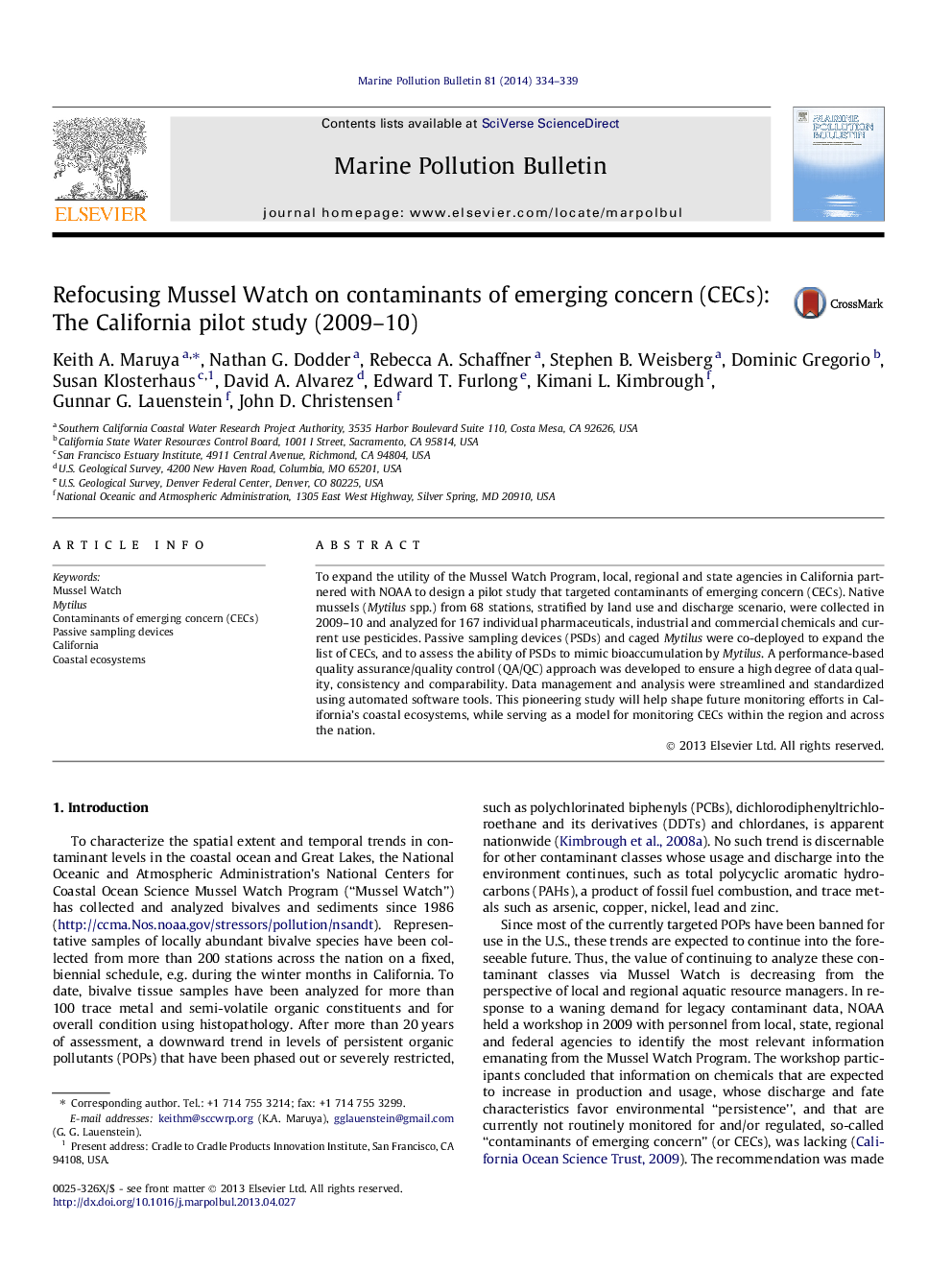| Article ID | Journal | Published Year | Pages | File Type |
|---|---|---|---|---|
| 4476766 | Marine Pollution Bulletin | 2014 | 6 Pages |
•A multiagency team designed a study on contaminants of emerging concern (CECs).•Sampling sites in California were added to assess the impact of management actions.•Native bivalves from 68 locations were analyzed for 167 individual CECs.•The utility of passive samplers as a water quality monitoring tool was assessed.•Leveraging of available resources expanded the scope of monitoring statewide.
To expand the utility of the Mussel Watch Program, local, regional and state agencies in California partnered with NOAA to design a pilot study that targeted contaminants of emerging concern (CECs). Native mussels (Mytilus spp.) from 68 stations, stratified by land use and discharge scenario, were collected in 2009–10 and analyzed for 167 individual pharmaceuticals, industrial and commercial chemicals and current use pesticides. Passive sampling devices (PSDs) and caged Mytilus were co-deployed to expand the list of CECs, and to assess the ability of PSDs to mimic bioaccumulation by Mytilus. A performance-based quality assurance/quality control (QA/QC) approach was developed to ensure a high degree of data quality, consistency and comparability. Data management and analysis were streamlined and standardized using automated software tools. This pioneering study will help shape future monitoring efforts in California’s coastal ecosystems, while serving as a model for monitoring CECs within the region and across the nation.
